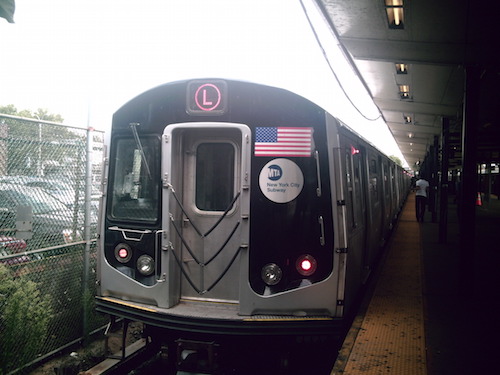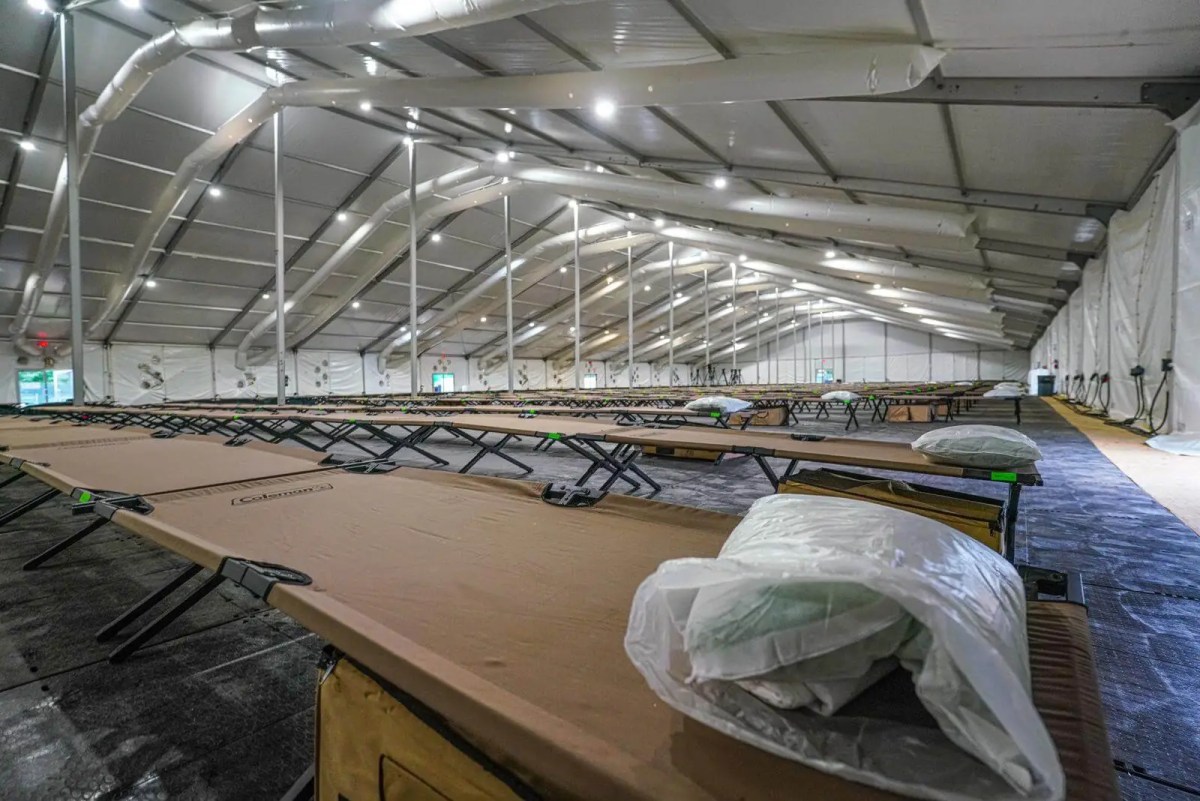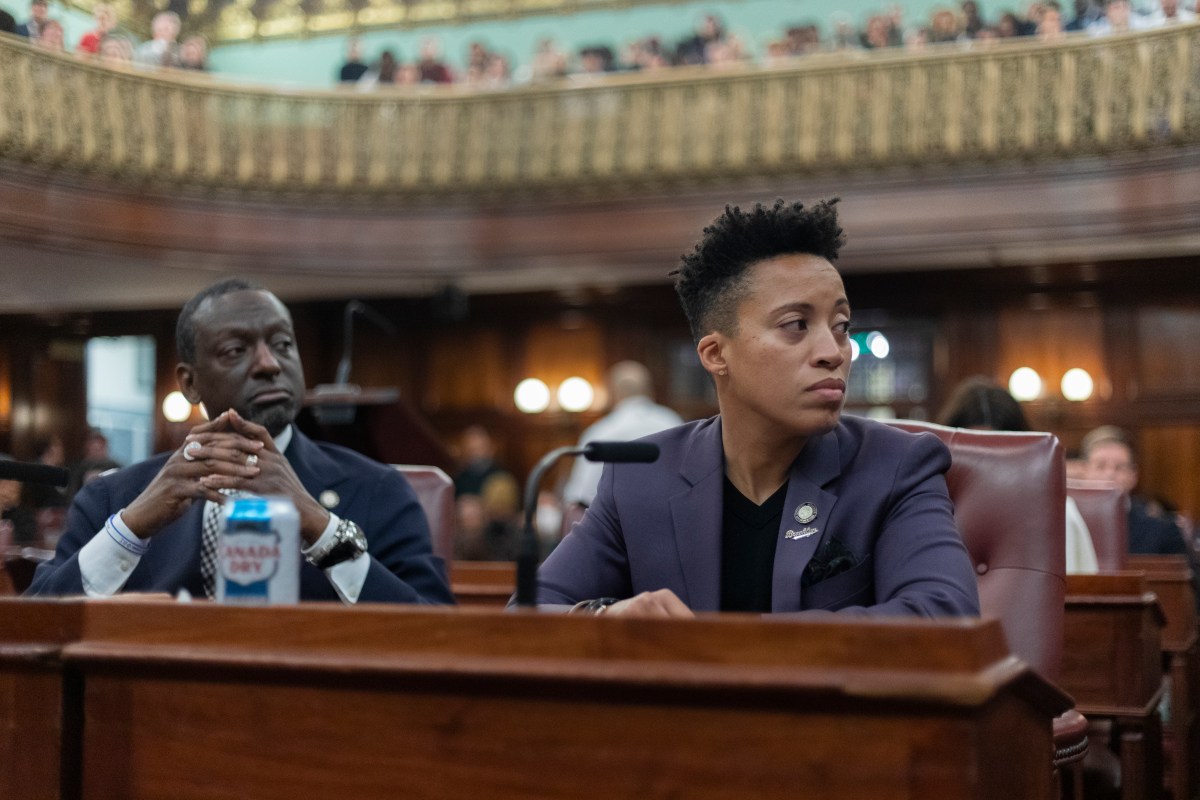If riding the train these days is a trip down a rabbit hole than not having a train to ride at all is going to be a journey through the Twilight Zone.
But that’s going to be the reality for more than 225,000 riders who travel between Manhattan and Brooklyn on the L train every day starting April 2019.
The Metropolitan Transportation Authority (MTA) will be shutting down L train service between Brooklyn and Manhattan for 15 months to make repairs to stations damaged during Hurricane Sandy. The 2012 superstorm surge flooded the 100-year-old Canarsie Tunnel under the East River with millions of gallons of saltwater, causing severe damage.
Earlier today, elected officials and transit advocates stood united at the Macri Triangle in Williamsburg to call on city agencies, including the Department of Transportation (DOT) to implement real bus infrastructure during the L train shutdown.
According to recent figures, the MTA expects about 5 to 15 percent of displaced L train riders to rely on buses.
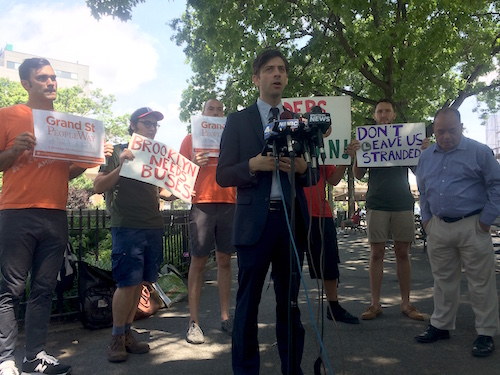
Advocates want the city agencies to commit to three important changes for riders during the shutdown: a robust bus network, additional station improvements, and specific commuting options for populations farther along the L train line in neighborhoods like Brownsville and East New York.
“This is an enormous undertaking but it can also be devastating to the community. We need to make sure that we are holding the MTA and the DOT fully accountable to make sure that all options are on the table, whether it’s a new bus service, modified carpool lanes or modified traffic patterns. There needs to be an intensive coordination, there can be no gap in coordination and that everyone is working together,” said City Councilman Stephen Levin (D-Williamsburg, DUMBO, Downtown Brooklyn, Boerum Hill).
In addition, advocates are calling for a “PeopleWay” concept along 14th Street, that would limit single-occupancy vehicles along a stretch of 14th Street in Manhattan and make for bus priority lanes instead.
Local resident Pedro Valdez Rivera Jr., 25, who lives near the Jefferson stop off the L train in Brooklyn is skeptical of the MTA and DOT plan for the L train shutdown. He is already planning to add 20 to 30 minutes to his commute during the 15 month period to compensate for the loss of transportation.
“Once the L train shuts down in 2019, my family and I will be taking the J,M and Z train every day and it’s going to be overcrowded, and it’s going to take extra time each way to get there. I want the MTA and the DOT to have a positive cooperation amongst themselves and to listen to the community’s concerns regarding the shutdown. Honestly, handling this shutdown is going to be tough task because it’s going to have to be a full cooperation between the MTA, the DOT, the general public, bus riders, pedestrians, drivers and local businesses who depend on these agencies to keep life running smoothly,” said Rivera, Jr.
Looking to the future, advocates and riders are asking for plans that will not only help during the crisis but improve transit in the area for years after, like adding additional substations, building infrastructure to speed up trains entering Eighth Avenue, opening closed entrances and increasing accessibility for disabled riders.
In June, the MTA and DOT began presenting proposals for transportation alternatives including shuttle service over the Williamsburg Bridge, increased service on the J, G and M Lines and regular or Select Bus Service across town in Manhattan as well as additional ferry service.
The MTA has been floating a few bus service options for displaced L train riders to communities along the L train shutdown corridor; however none have been solidified:
– Route 1: North Williamsburg – South Williamsburg – Delancey Street/Essex Street – Spring Street – Prince Street – Broadway/Lafayette streets – Bleecker Street
– Route 2: Grand Street – Delancey Street/Essex Street – First Avenue/14th Street
– Route 3: Grand Street – Delancey Street/Essex Street – Spring/Prince streets – Broadway/Lafayette streets – Bleecker Street
– For riders looking to get across town in Manhattan the options include standard Select Bus Service, enhanced Select Bus Service, a car-free busway on 14th Street’s middle section, or a car-free busway along the entire length of 14th Street.
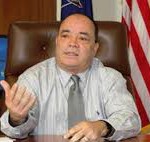
“We have to come up with clear, alternative ways for the 300,000 people who ride to Manhattan back and forth to have a safe and quick trip back and forth. The lack of plan at this time is troubling,” said State Senator Martin Malave Dilan (D-Bushwick, East New York, Ocean Hill/Brownsville)
During the shutdown, L train service will continue to operate in Brooklyn between Bedford Avenue and Rockaway Parkway.


